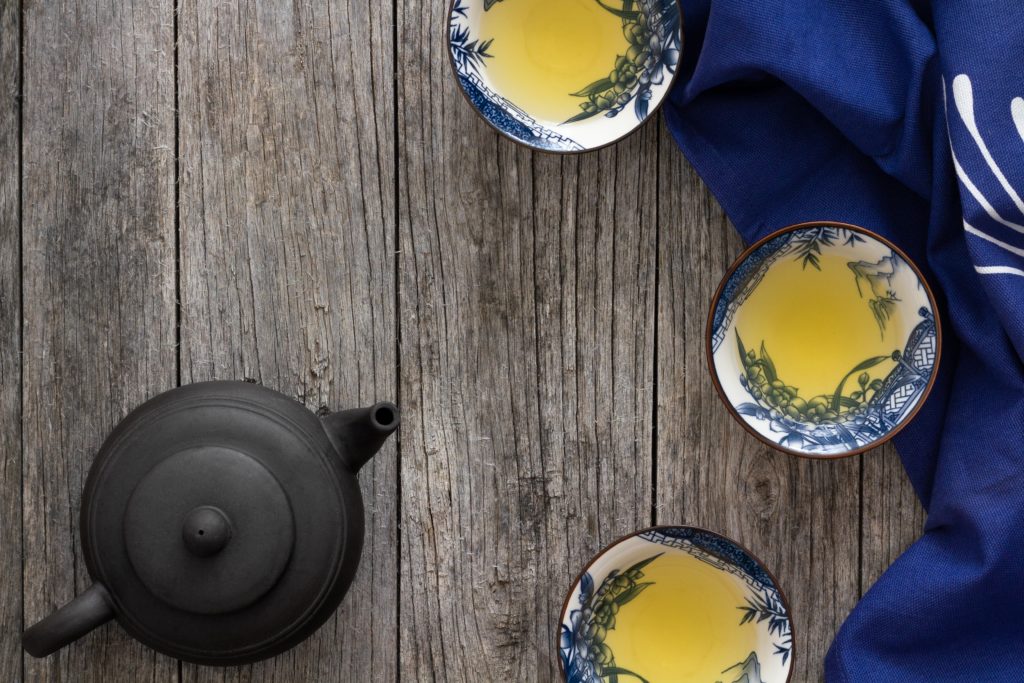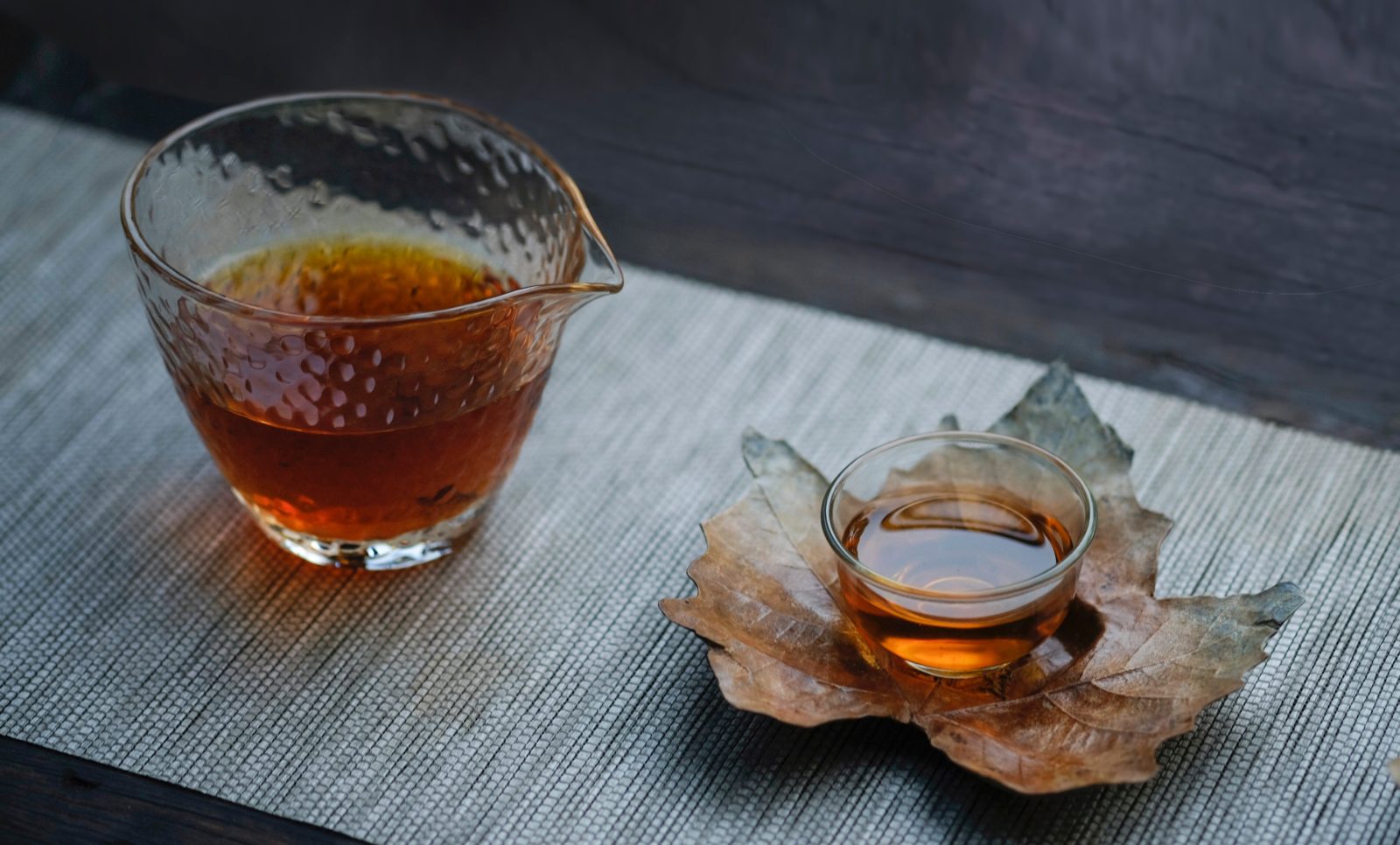Silver Needle, Golden Monkey and Shou Mei Among Fujian’s Star-Studded Lineup of Prized Teas

Happy Halloween, Ku Cha family! We hope everybody gets into the spirit tonight. And given the temperatures out there (brrrr), we recommend filling a thermos with your favorite tea for the night of spooks, skeletons, witches and shivers.
China’s celebration of ghosts, called The Ghost Festival or Hungry Ghost Festival, takes place in July. It does not involve carved pumpkins, bags of candy or apples enrobed in a cherry-red glaze of cooked sugar. Instead, the ghosts of deceased relatives are welcomed back to earth, where they are invited to feast and enjoy themselves. Lanterns are lit, and sent down rivers. Incense wafts everywhere. Seats are put aside for ghosts at plays and dinner tables.
We think trick-or-treating and Halloween in general is loads of fun. We don’t have much in the way of tricks up our sleeves here at Ku Cha World HQ, other than tricks for brewing perfect tea at home. But we’ve got plenty of treats.
Among them? Three teas from one of China’s storied regions for tea, the Fujian Province, in southeast China just across from the Taiwan Strait.
Subtropical and mountainous, Fujian supports some of the best tea-growing farms in China. Fujian, the most heavily forested region of China (forests cover 63 percent of the land), is famous for its oolongs, many of which were developed in the province. And white teas, two of which we are spotlighting here, were first born in Fujian.

Silver Needle: Delicacy From Rare Tea Shoots
Fujian produces many of the world’s most sought-after teas. Silver Needle is among them.
This white tea, called Bai Hao Yin Zhen in Chinese, uses only the leaf shoots of tea plants, which are harvested in the spring. The top buds of Camellia sinensis plants are highly prized. Among other things, they offer delicacy and complexity that goes beyond tea leaves harvested across the rest of the long growing season.
They only appear once a year, and are small compared to mature leaves. Growers try to harvest the shoots during sunny mornings, shortly after dew has had time to evaporate. They often are arranged in shallow baskets outdoors for as long as three days. This wilts and softens the unopened shoots. Then tea farmers place them in piles, where they undergo oxidation, before their final drying.
As a result of the rarity of the shoots and the care that is taken to turn them into Silver Needle tea, not much tea gets produced. With demand high for such high-quality teas, prices rise. Silver Needle is among the most expensive teas grown in China.
We carry two kinds of Silver Needle, both from sources that we honor for their meticulous approach to finding the best tea. Our traditional Silver Needle tastes sweet and clean. Perfection in a cup. To craft our Jasmine Silver Needle tea, artisans scent the tea with fresh jasmine flowers, picked in the morning on as many as six days and left with the Silver Leaf shoots for five hours at a time. The result combines Silver Leaf’s sweetness with the heady perfume that comes from jasmine flowers.

Golden Monkey: Roasted and Robust Tea From Shoots
Golden Monkey and Silver Needle are like siblings. Both come from Fujian, and both are made from tea shoots or buds that are plucked in early spring.
But where Silver Needle is a delicate white tea, Golden Monkey, called Jin Hou Gong in China, is a black tea. Another difference: Golden Monkey uses one leaf and one bud from each tea plant, rather than just buds.
A powdery golden down covers the tea buds used to make the tea, which partly explains the “golden” part of the name. The process that goes into making Golden Monkey also helps turn the final brew golden. The “monkey” part? The buds used to make the tea resemble monkey paws.
In China people drink Golden Monkey in Gongfu, the Chinese ceremonial style of enjoying tea, to appreciate how the flavor evolves during multiple steepings.
We source our Golden Monkey from especially fine estates, where the care that goes into cultivation, harvesting and production is immense. Our Golden Monkey tastes rich and smooth, with notes of honey and sweet yam.

Shou Mei: Health Benefits Galore in a Tea Cake
Where Silver Needle and Golden Monkey are some of the most expensive teas in the world, the white tea Old Man’s Eyebrow is more common on tables across China and around the world. But that doesn’t mean the tea, which is called Shou Mei in China, is pedestrian. Anything but! Shou Mei is a Ku Cha House of Tea favorite, offering myriad flavor and health benefits.
Unlike the other teas from Fujian in this piece, we receive Shou Mei in the form of a cake, like pu-erh teas. As such, it ages well. In fact, Shou Mei’s flavors deepen and grow more complex with age.
The tea is especially well known for its health benefits. Among the reasons people sip Shou Mei? Improving immune health, enhancing skin complexion and detoxification.
Our Shou Mei is sweet and rich, a wonderful accompaniment to a spicy meal or a chilly morning.

